

 | Energy Engineering |  |
DOI: 10.32604/EE.2021.016010
REVIEW
Review on Wind Power Development and Relevant Policies between China and Japan
1School of Foreign Languages, Anhui Agricultural University, Hefei, 230036, China
2School of Energy and Power Engineering, Inner Mongolia University of Technology, Hohhot, 010051, China
3Institute of Engineering Thermophysics, Chinese Academy of Sciences, Beijing, 100190, China
4Key Laboratory of Wind Energy Utilization, Chinese Academy of Sciences, Beijing, 100190, China
5China Shipbuilding Industry Corporation, Haizhuang Wind Power Co., Ltd., Chongqing, 401122, China
*Corresponding Author: Zekun Wang. Email: wangzekun0221@163.com
Received: 30 January 2021; Accepted: 27 April 2021
Abstract: China has abundant wind energy resources and huge development potential among developing countries. Japan is a developed country that planned to increase the use of renewable energy, especially wind energy. This research is aimed at reviewing the development of wind power and relevant policies between China and Japan. Firstly, we introduced the current status of global wind power development, such as the global installed capacity of wind power. The annual development of wind power generation in China and Japan is compared, and the distribution characteristics of wind resources are compared. Furthermore, the market share in China and Japan is introduced. Finally, according to the comparison of the government policies between China and Japan, we pointed out the existing problems in the wind power industry. In addition, we gave some suggestions on the development of wind power for China and Japan. These suggestions should be taken into account when designing national climate policies and have an important reference value for the future development of China’s wind energy industry.
Keywords: Renewable energy; wind energy; energy configuration; installed capacity; government policies; China and Japan
The energy sector worldwide is facing with significant challenges, such as energy shortage, environmental pollution, greenhouse gas emission, and energy supply in rural areas, which severely affect its sustainable development and carbon-neutral development goals [1,2]. Promoting sustainable energy systems is the key solution to these problems [3]. Increased demand for the development and utilization of renewable energy around the world because of the continuing oil crisis and environmental pollution [4]. As a new type of renewable energy, wind energy is welcomed by society, industry and politics for its clean, practical, economic and environmentally friendly characteristics. At the same time, people pay more attention to the importance of improving the efficiency of wind energy utilization [5]. According to energy market surveys in the United States and Europe, wind power generation is expected to account for approximately 12% of global power generation by 2020 [6]. In Denmark, since 2007, wind energy accounts for more than 20% of its total energy consumption and will reach 50% by 2025 [7]. Furthermore, EIA released the “2020 Annual U.S. Energy Outlook” report that the U.S. power system will also experience rapid change, with the support of federal tax credits (PTC) and state renewable energy targets, along with the steady decline of wind and photovoltaic costs, by 2050, renewable energy will be the fastest-growing power source. As electricity loads grow slowly and renewables grow rapidly, coal and nuclear power generation in the United States will decline.
As the world’s largest developing country, with a rapid annual growth rate of 4.7% (in 2019), China ranks second globally in terms of energy consumption, CO2 emissions and greenhouse gas emissions, and places greater emphasis on environmental protection and energy conservation [8]. At present, the most important task of almost all developed countries in the 21st century is the development and utilization of wind energy. China also included it in its development plan. China has the world’s top wind energy resources, and its development and utilization potential is very promising. In terms of annual wind turbine installations, China once again occupied a leading position, adding 25.7 GW of new capacity (excluding Hong Kong, Macao and Taiwan) in 2019, and a significant growth compared to 2018 with 20.6 GW of new installed capacity installed [9].
Japan has the largest nuclear power generation capacity globally, with 29.1% of the total power supply coming from nuclear power generation. Although wind energy is expected to account for only 1.7% of the total electricity supply in 2030 [10], Japan is cooperating with other countries and the government’s active actions to develop commercial wind energy systems. Especially in the Fukushima nuclear crisis triggered by the earthquake on March 11, 2011, the Japanese government has paid more attention to increasing the use of renewable energy. From July 2012, the Japanese government has introduced a new policy which is called feed-in tariffs, to accelerate the development of renewable energy [11]. At the same time, this provides an opportunity for Japan to develop wind power.
China and Japan have a lot of commons, for example, the same background of cultural and historical. On geographical location, the relationship is the same as a narrow strip of water, and both of them are inseparable. Policy guidelines of the two governments have a deep impact on each other. Although China and Japan have deep economic ties, the hostility between the two countries due to territorial, historical and economic disputes resurfaces from time to time. However, in the field of renewable energy, they reached a consensus that the government has formulated a series of plans to promote the development of energy-efficient technologies and at the same time strengthened international cooperation, especially wind power.
However, there are still some difficulties in the development of wind energy. China and Japan have different climates than European Union countries. Due to the complex terrain, the intensity of wind turbulence is stronger. Due to its meteorological characteristics, it is often struck by typhoons and lightning. Furthermore, since the wind turbine is connected to the grid, the power fluctuation of the wind will affect the change of the power system. In order to find the best solution to these problems, many types of research have been conducted.
At present, few people have analyzed the development of wind power in China and Japan. The purpose of this research is to review the development of wind power and relevant policies between China and Japan. The same faced opportunities and challenges between China and Japan are pointed out. According to the policies of Japan, which is a developed country, for the development of wind turbine, some suggestions for China which is as a developing country are given.
The contributions of this study are as follows: i) We introduced the current status of global wind power development and gave the wind power market forecast for 2021–2025. ii) Compared the annual development of wind power generation in China and Japan. iii) We compared the difference in government policies between China and Japan and pointed out the existing problems in the wind power industry. Furthermore, we gave some suggestions for the development of wind turbine for China and Japan.
2 The Global Status of Wind Power
Reducing the use of traditional energy around the world is the main focus of efforts to reduce the growth of greenhouse gas emissions and reduce the carbon footprint of human development activities. As we all know that wind energy, unlike fossil fuels, is one of the most environmentally friendly and cleanest energy sources and will never be depleted. In the past ten years, wind energy has been widely developed and applied worldwide. Although the policy uncertainty in the key markets of the Organization for Economic Cooperation and Development (OECD) is worrying, strong markets in China, India, and Brazil, as well as new markets in Latin America, Africa, and other parts of Asia, will drive global growth during this period. Their success in wind energy generation encouraged other countries to also use wind energy as an important part of their energy generation systems. However, the current on-grid electricity price for wind power is still relatively high. Taking Spain as an example, the average price in the wind energy industry is 25 Euros per MW · h. We still have a long way to go to promote the development of global wind power.
2.1 The Global Installed Capacity of Wind Power
The growth rate of installed capacity relative to the previous year is an important indicator of the vitality of the wind power market. On March 30, 2020, the Global Wind Energy Council (GWEC) published “Global Wind Energy Report: Annual Market Update 2019”. It introduces the global wind energy development situation in 2019 and predicts the global wind energy market situation in 2021–2025. Fig. 1 shows the total installed and newly installed wind power capacity in the world during 2003–2019. It can be seen from Fig. 1 that the total installed capacity in 2003 is only 39,413 MW; in response to government plans, countries rapidly increased investment, and the global total installed capacity at the end of 2019 is up to 650,558 MW.
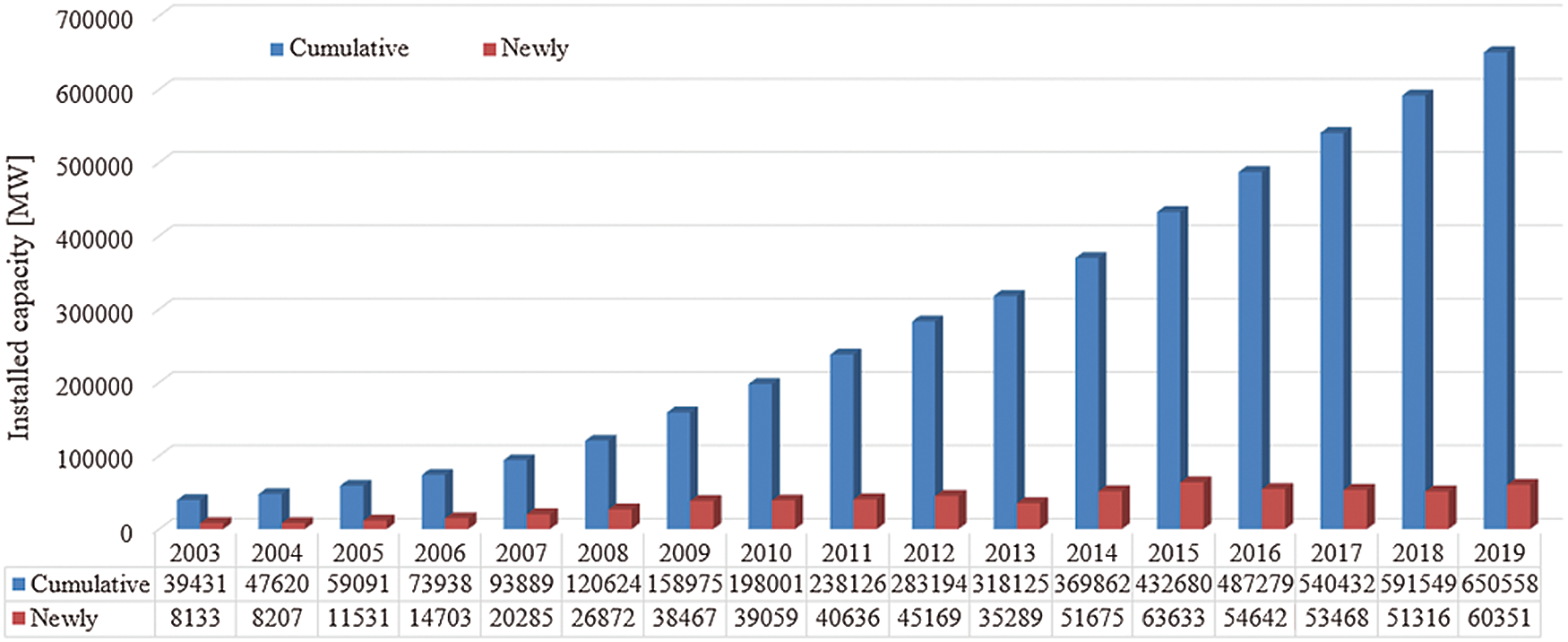
Figure 1: Global cumulative and newly installed wind capacity 2003–2019 (Source: GWEC/2020)
New installed wind power capacity in 2019 increased from more than 590,000 MW globally in 2018, with global new installed capacity already exceeding 600,000 MW. In the meantime, in terms of overall investments derived from global wind energy development, reflects an increase of 6% to USD 80.9 bn in 2019. Meanwhile, investment in offshore wind power generation hit an all-time high of USD 29.9 bn, up 19% from a year earlier [12]. As economic slowdown and policies are introduced, global installed wind power capacity will increase steadily after 2019, due to the steady decline in the cost of wind power.
2.2 The Different Countries Installed Capacity of Wind Power
Fig. 2 provides the ranking of the top 10 countries in terms of cumulative and newly installed capacity in 2019. It can be seen from the figure that China has been leading the global wind power market since 2009. At the end of 2019, the installed capacity of various countries increased significantly again. Countries with more than 30000 MW include: China (237029 MW), the United States (105433 MW), Germany (61357 MW) and India (37529 MW), and the proportion of the new installed capacity is 43.34%, 15.15%, 3.63% and 3.94%, respectively.
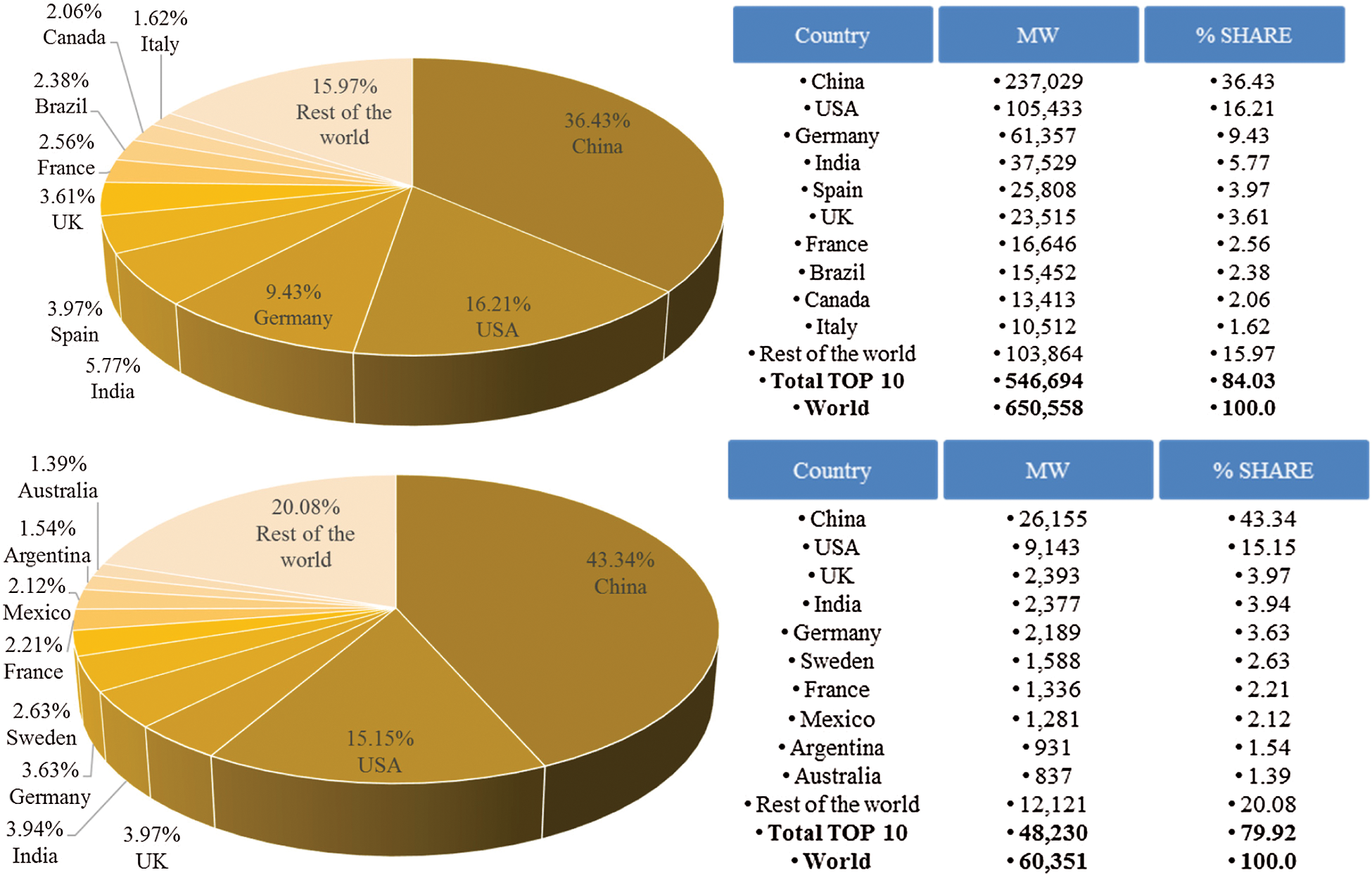
Figure 2: The top 10 cumulative and newly installed capacity in 2019 (Source: Renewable Energy Statistics 2020)
The world’s top 10 countries with a cumulative installed capacity of wind power accounted for 84.03%, and the newly installed capacity was 79.92%. Analysis of recent data released by FERC and the U.S. Energy Information Administration (EIA), new renewable energy installations in the U.S. outpaced natural gas in 2019, and total investment in the U.S. renewable energy sector was $55.5 billion, up 28 per cent, outpacing the growth in Europe. Meanwhile, the cost of wind power has steadily fallen, supported by federal tax credits (PTC) and state-level renewable energy targets. Therefore, this signifies that there will be a large number of installations in 2019 and 2020.
With the trend of global economic growth, the global demand for wind energy is also steadily increasing. Analyzing the global wind power market, we can conclude that it has the following characteristics. (1) For the Asian wind power market, the total cumulative installed capacity in 2019 is 29,122,800 kilowatts, which is still ahead of the global market and continues to develop steadily. (2) Due to the rapid development of wind energy in China and India, Asia has become the world’s largest wind energy market area, with a new installed capacity totaling more than 30.61 million kilowatts in 2019. (3) The North American markets are still very uncertain The instability of federal policy originating from the United States will still cause a “boom-bust” cycle for the country’s wind power industry. American markets have their strong year ever in 2019 with 9,143 MW in new installed capacity. The upcoming expiration of PTC in 2020 means that 2020 will be solid and productive years for USA installations. (4) The potential for offshore wind energy development is huge, especially in key markets such as the UK and Germany. The global cumulative offshore installed capacity exceeds 27.2 GW, and the global new offshore installed capacity exceeds 5.2 GW, which become a major development point for wind power development in 2019. More than 90% of wind farms in European waters: in the North Sea, Baltic Sea and in the Atlantic Ocean. However, China’s offshore wind energy development is beginning to develop rapidly, followed closely by Japan, South Korea, and the United States.
2.3 Market Forecast during the Period 2021–2025
Although onshore projects are currently the main focus of wind power, an important direction of wind power is offshore wind power projects, because the locations near some power load centers around the world has abundant offshore wind power resources and has additional technical and economic advantages. In the past several years, the market diversification trend has emerged and intensified in recent years because the status of wind energy is a stable, profitable and low-risk investment. This trend is expected to continue in the next few years. According to GWEC/Global Wind Report_25-March-2020, the global wind power market forecast from 2021 to 2025 is depicted in Fig. 3.

Figure 3: Global cumulative and newly installed wind capacity 2021–2024 (Source: GWEC/2019)
From the figure, the new installed capacity presents the tendency to increase in the following five years and the total cumulative installed capacity will be up to more than 1005 GW. It can be seen that the global wind energy demand is steadily increasing; however, the development of wind energy starts to slow down from 2022.
Global markets will go on being dominated by China; at the same time, some new markets will also start to play new roles over the next four years. Installations from 2021 onward will be mainly driven by subsidy-free onshore wind, but new installations are unlike to go down somewhat until the previously approved project pipelines run their course. India will continue to be a large driver in South East Asia.
3 The Status of China in Wind Power
China is in a unique position to be able to exploit her richest wind power resource to not only meet the rapidly growing energy demand but also the needs of approximately 136 million people who live in rural areas, such as mountains and grasslands where there is no access to conventional electricity services [13]. As the second-largest energy consumer globally, China is highly dependent on coal, which has become an important part of the world’s carbon dioxide emissions. Therefore, China must work hard to accelerate the development of wind energy resources for the sake of national energy security. Regarding the above situation, the Chinese government pays great importance to the development of wind power industry. In the past decade, the Chinese wind power industry has achieved unprecedented rapid development. Meanwhile, this trend will be expected to go on doing so over the next several years.
Expressed by the China Meteorological Administration (CMA), the land wind resources which can be developed are about 253 GW, available offshore wind resources can reach about 750 GW [14].
The annual average wind speed in 1% of China’s land area exceeds 6 m/s. Fig. 4 conveys the distribution of wind energy resources in China (source from CMA). As shown in Fig. 4, wind resources in China are mainly distributed in two major wind belts: one is the “Three-North” areas, which are the northwestern, northern, and northeastern. In these areas, the development trend of wind power generator is mainly based on large-scale wind farm, and these areas wind power density level reaches three or more. Thus, for a long time, the “Three-North” areas are the main areas of Chinese wind power development. The other is in the eastern coastal land, islands, and offshores. Chinese southeast area is adjacent to some power load centers, and at the same time has abundant offshore wind power resources, with additional technical and economic advantages. Therefore, power transmission and reception have a great advantage and the development of offshore wind power also becomes an important direction of wind power development.
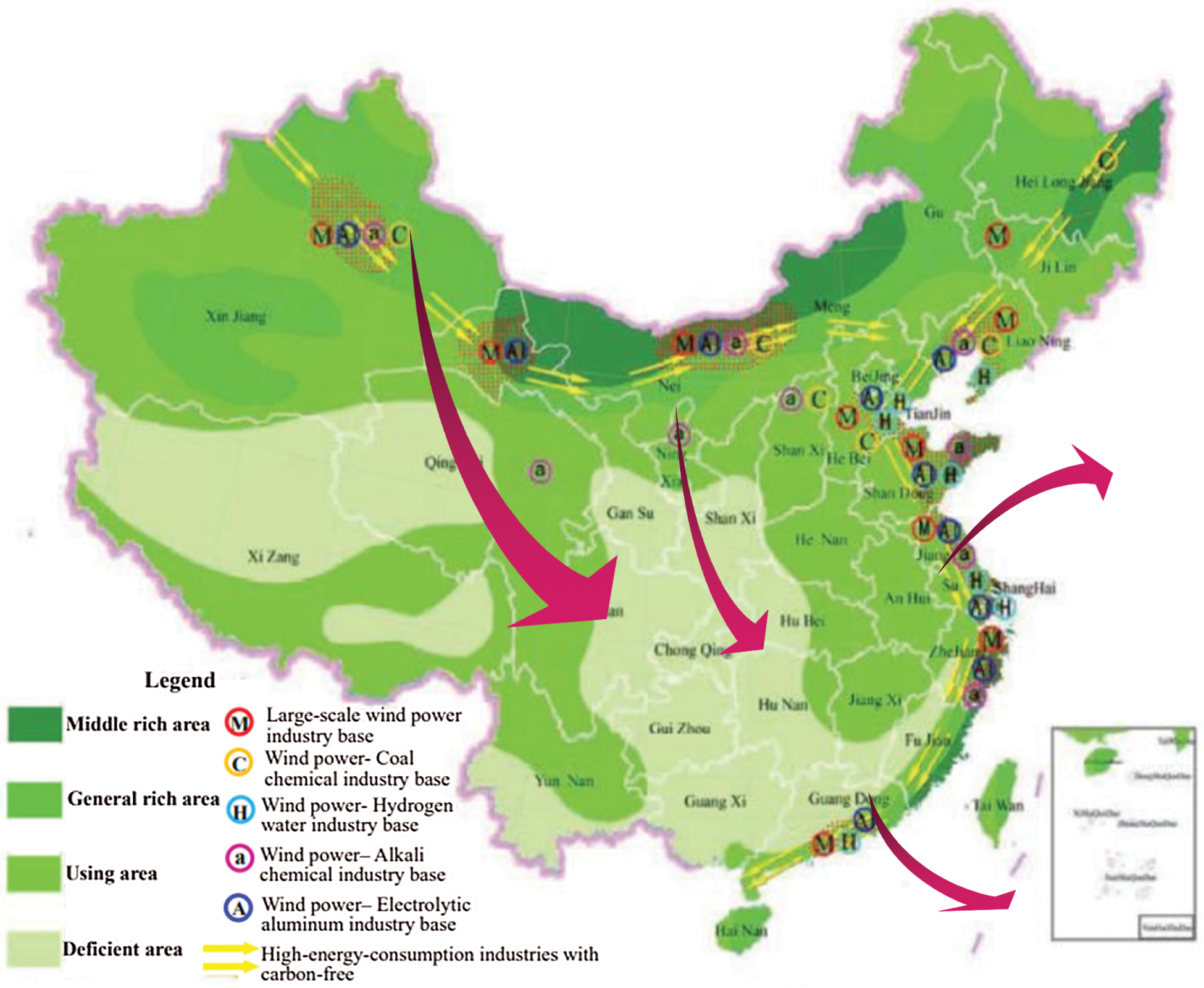
Figure 4: Distribution of wind energy resource in China (Source: CMA/2020)
China’s wind energy resources have two characteristics: the first is that the distribution of wind energy resources and complementary seasonal water resources. Although wind energy is rich in resources, its seasonal distribution is uneven. Generally speaking, it is rich in spring, autumn and winter, but poor in summer. Simultaneously, the rainy season in the south accounts for about 50% to 60% of the annual rainfall, roughly from April to July [15]. So, only water resources are abundant when wind energy resources are scarce. Rich wind energy resources and water energy resources can realize complementary distribution in the season. The second is that the distribution of wind power resources does not match the power load. Coastal area power load is big, but the land area abundant wind resources are small; The northern wind is rich in energy resources and has a small power load. These kinds of situation to wind power of economic development bring about a lot of difficulties.
3.2 The Development of Wind Power in China
Fig. 5 summarizes data on the newly installed and total installed wind power capacity in China during 2010–2019 [16]. As shown in this figure, China which is the largest overall market for wind since 2010, once again gained the global leader, both in terms of annual market and cumulative wind capacity in 2019. After a year of market consolidation in China, the world’s largest market with over 210 GW is installed capacity. Moreover, new installed capacity is up to 10.08% from 2018, with 25.7 GW of new capacity connected to the grid in 2019. This indicates that China’s wind power industry has entered a stage of accelerated development. In summary, the annual new wind power capacity is increasing, with an average annual growth rate of more than 110%.
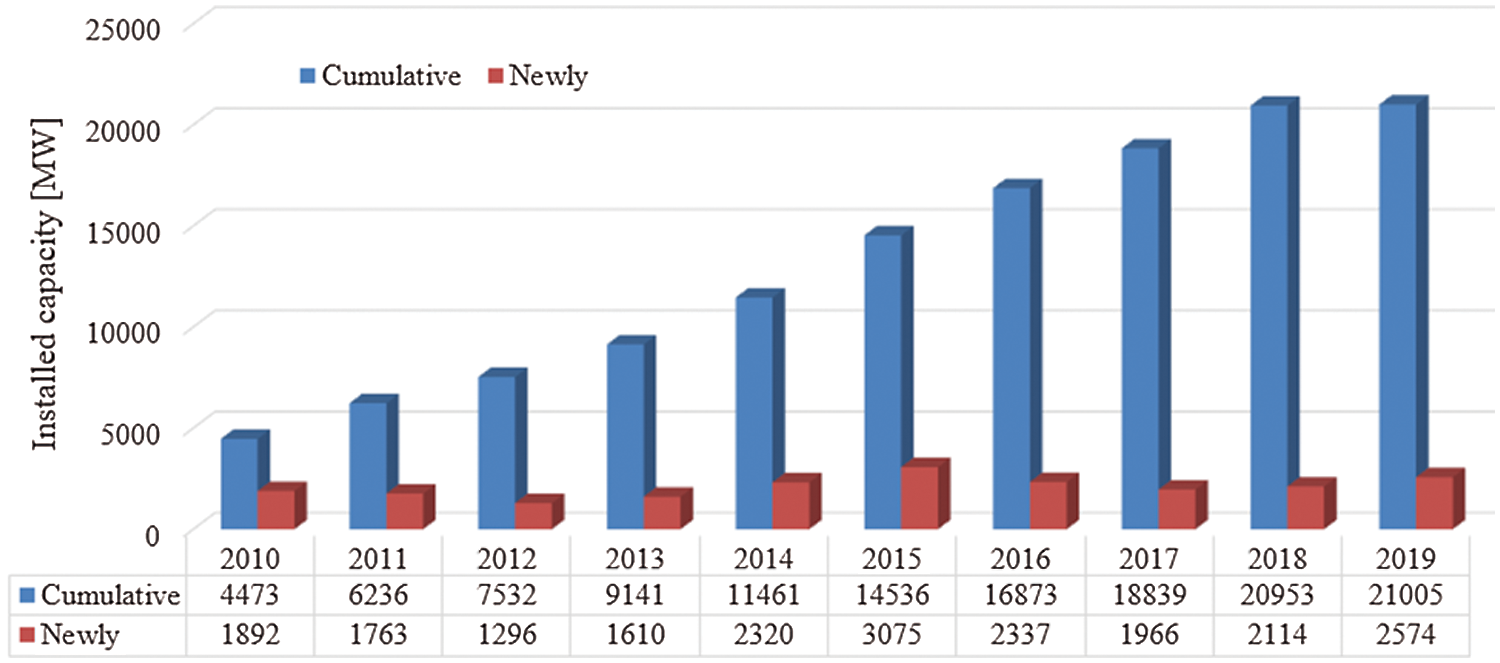
Figure 5: Cumulative and newly installed wind capacity during 2010–2019 in China (Source: NEA)
Fig. 6 shows the top ten provinces of newly installed and total installed wind power capacity in China in 2019. The fastest capacity growth in recent years has taken place in Hebei, which the new wind power installed capacity is 248 MW, accumulated total wind capacity installed is 1.63 GW in 2019. The top provinces of new wind power installations are Inner Mongolia adding 3.0 GW to the Chinese grid, followed by Xinjiang with a record accumulative total installed capacity of 1.6 GW. However, in some provinces of Liaoning, Yunnan and Gansu, the new wind power installed capacity slowed down due to a lack of sufficient grid infrastructure and decreased electricity demand. At the same time, plans for 7 giant wind power projects with a scale of more than 10 GW scale has been completed, and many of them have completed preliminary construction. It seems that the improvement of technical efficiency cannot only improve the efficiency of land use but also reduce construction costs, which is conducive to the construction of power grids and facilitates the access rate of wind power.
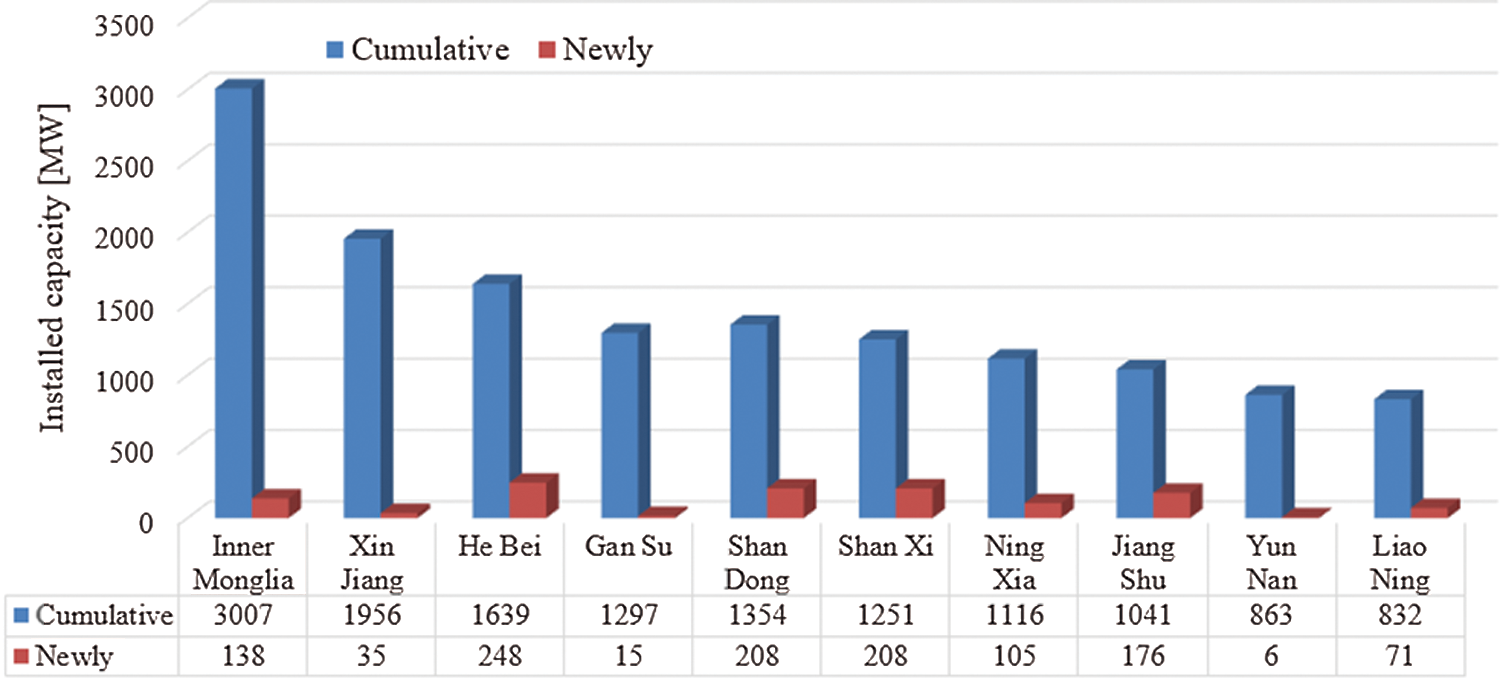
Figure 6: The top 10 provinces of cumulative and newly installed capacity in China at 2019 (Source: NEA)
3.3 The Domestic Manufacturing of Wind Power Equipment in China
During the 14th FYP, China’s wind power manufacturing industry has developed rapidly, and the manufacturing level has greatly improved. Fig. 7 shows the top five manufactures in the Chinese wind market in 2019. Although more than 70% of wind power equipment was imported in 2005, through years of technology accumulation and continuous capital investment, the production level of domestic manufacturers has been continuously improved. 78% of wind power equipment was manufactured domestically in 2019. In 2021, CHINA HUANENG and China General Nuclear Power Group released the bidding information for wind turbines of eighteen wind power projects, with a total installed capacity of 1603.9 MW. Through the continuous expansion of the market. Among them, Goldwind has consolidated its leading position with a market share of 24.30%, becoming the world’s second-largest supplier of power equipment, with a market share of 14%. Envision with 9.00% in China has been among the world top 5 with a market share of 10.0% in the world. There are eight companies in China were among the world top 15 in 2019. They also marked a significant increase in exports: 3,205 MW was exported to 17 countries, including the United States, Italy, Belarus, Chile, Cuba, Australia and other countries. They can not only produce 1.5 MW, 2 MW and 3 MW wind turbines but also 5 MW large wind turbines and offshore wind turbines.
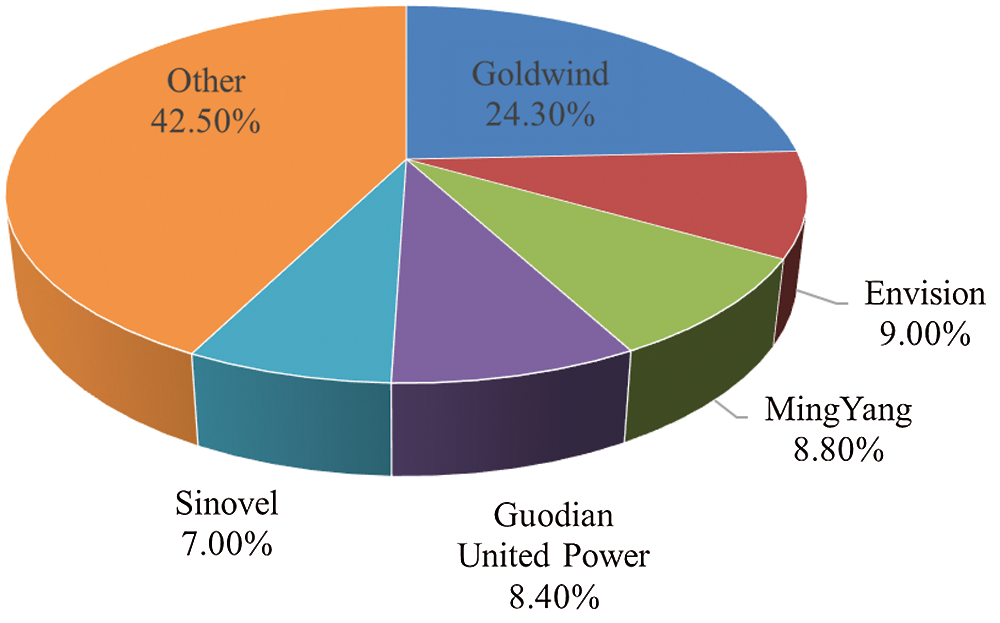
Figure 7: Top five manufactures in the Chinese wind market in 2019 (Source: https://www.AskCI.com)
3.4 The Wind Power Policies in the Chinese Government
The first-movers of the wind power industry in the globed such as Denmark, Germany and USA, have gradually introduced a complex set of energy policies to support the development of the wind power industry. However, with the support of the Danish government, China’s first steam turbine (on-grid) was just installed in Xinjiang in 1988. Nevertheless, China’s wind power policy did not develop until the “Opinions on Wind Farm Construction and Management” was promulgated in 1994. In 2002, the policy environment began to change because the State Council split the original State Power Company into five independent power generation companies and two power grid companies, thus introducing competition. The first “Renewable Energy Law” was issued in 2005. The policy instruments used include a set of related laws and regulations affecting technologies, production costs, prices, infrastructure and so on during the following years [17]. Since 2005, the result of wind power development also proved that these policies played a strong role in the wind power industry. On September 22, 2020, Chinese President Xi Jinping said in an important speech at the general debate of the 75th United Nations General Assembly that China will increase its nationally determined contribution and adopt more powerful policies and measures. China has put forward the “30 · 60 target”, the specific content is that carbon dioxide emissions will peak before 2030 and be carbon neutral by 2060. This commitment is not only related to the realization of my country’s second centenary goal and the sustainable development of the Chinese nation but also shows China’s responsibility in global affairs.
Although the Chinese economy has achieved rapid development, at the same time, increasingly serious environmental problems are also presented. The severe air pollution problem provides an opportunity for the wind power industry to expand further and consolidate its role as a clean energy supplier. In order to implement the “3060” goal, representatives of more than 400 wind energy enterprises from around the world unanimously adopted and jointly issued the “Beijing Declaration on Wind Energy” at the China Wind Power Conference 2020 held in Beijing [18]. In the 14th Five-Year Plan, wind power needs to be given room to grow in line with the national strategy of carbon neutrality: more than 50 gigawatts of new capacity will be installed annually. After 2025, China’s annual new installed wind power capacity should be no less than 60 GW, at least 800 GW by 2030, and at least 3000 GW by 2060.
4 The Status of Japan in Wind Power
Japan covers 380,000,000 km2 with a population of 125 million in 2020, with mountainous areas accounting for about 73% of the total area [19]. Although Japan’s resources are relatively scarce, according to the latest data from the New Energy and Industrial Technology Development Organization (NEDO), Japan has a vast sea area. It is estimated that the potential offshore wind energy resources there are about 1,600 gigawatts, about 6.5 times Japan’s current total power generation capacity [20]. In fact, wind power in Japan accounts for only 0.7% of the total generation capacity [21]. However, it accounts for a larger proportion of total power generation capacity in Europe, about 30% in Germany and 43% in Denmark. Japan’s energy structure is mainly oil and nuclear energy.
Fig. 8 shows the distribution of Japanese wind energy developed by NEDO in 2011 [22]. The color indicates the annual wind speed at an altitude of 80 m. The wind is also very active in northern areas such as Hokkaido, especially in winter. The topography of the center of Honshu is complex, and the mountains are heavy, so it has good wind potential. According to the recent data from NEDO, the research result shows that wind turbines can be installed in areas with an annual wind speed of 5.0 m/s or more, with a possible installation area of 3600 km2. Among them, the land wind resources can allow for 70,000 wind turbine units of 500 kW, with a total capacity of 35 GW. As shown in Fig. 8, it is obvious that Japan is surrounded by sea on all sides and is a maritime country, so there is a considerable amount of potential offshore wind energy resources that can be developed and utilized.
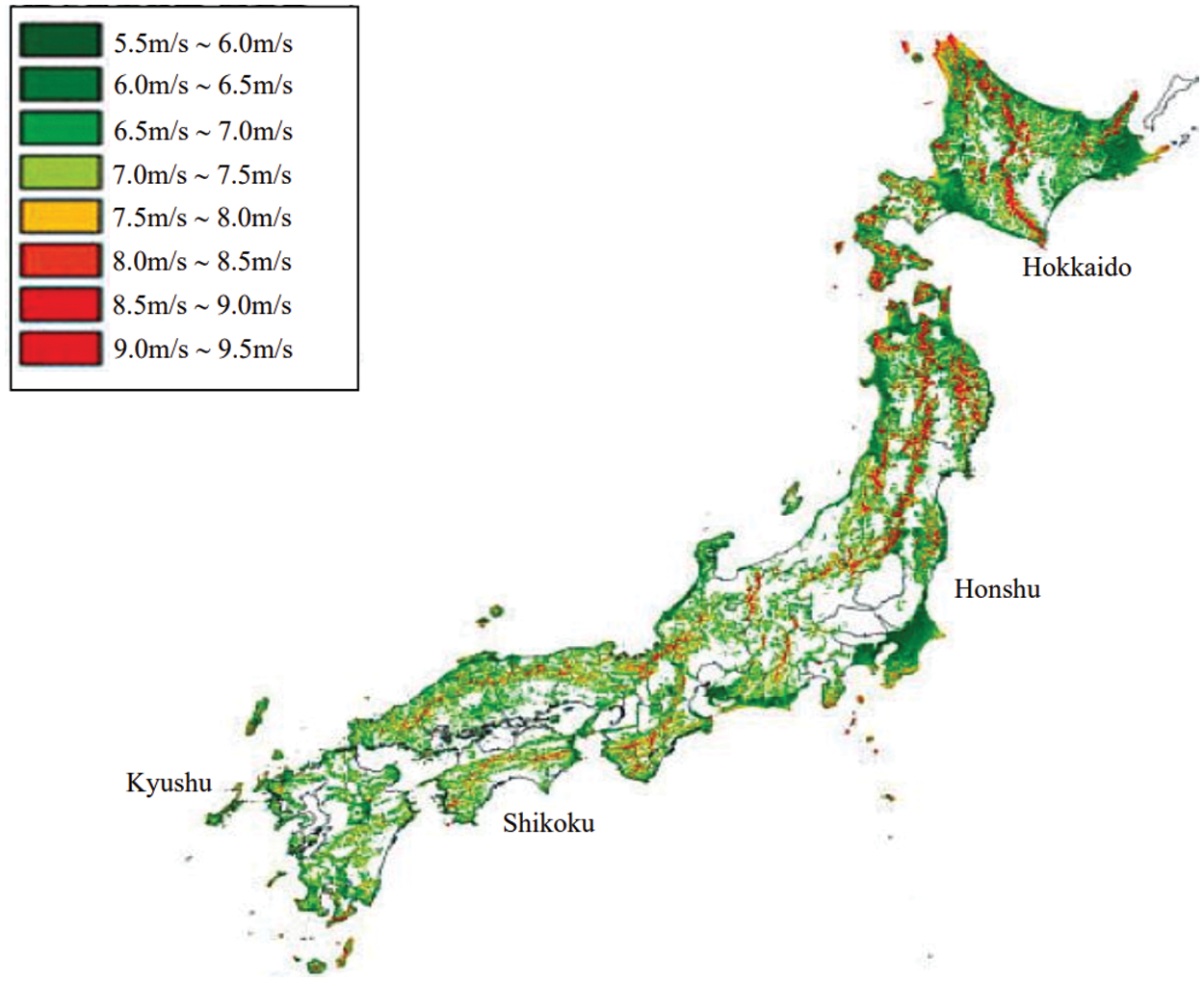
Figure 8: Distribution of wind energy map in Japan (Source: NEDO)
4.2 The Development of Wind Power in Japan
Fig. 9 shows the impact of wind power generation capacity on new and final installations in Japan during the period 2009–2019. As can be seen from the figure, the number of turbines and installed capacity have increased after 2009. NEDO and electric power liberalization initiated a project to promote new energy in the local area after the amendment of the Electricity Enterprise Law in 2000 [23]. However, for the period from 2011 to 2013, the speed of development has slowed down. Although the public strongly supports the shift from nuclear energy to renewable energy, progress has been slow in Japan. As of the end of 2019, the total capacity was 4377 MW, representing 0.74% of the total power in Japan and 0.67% of the cumulative wind power in the world.
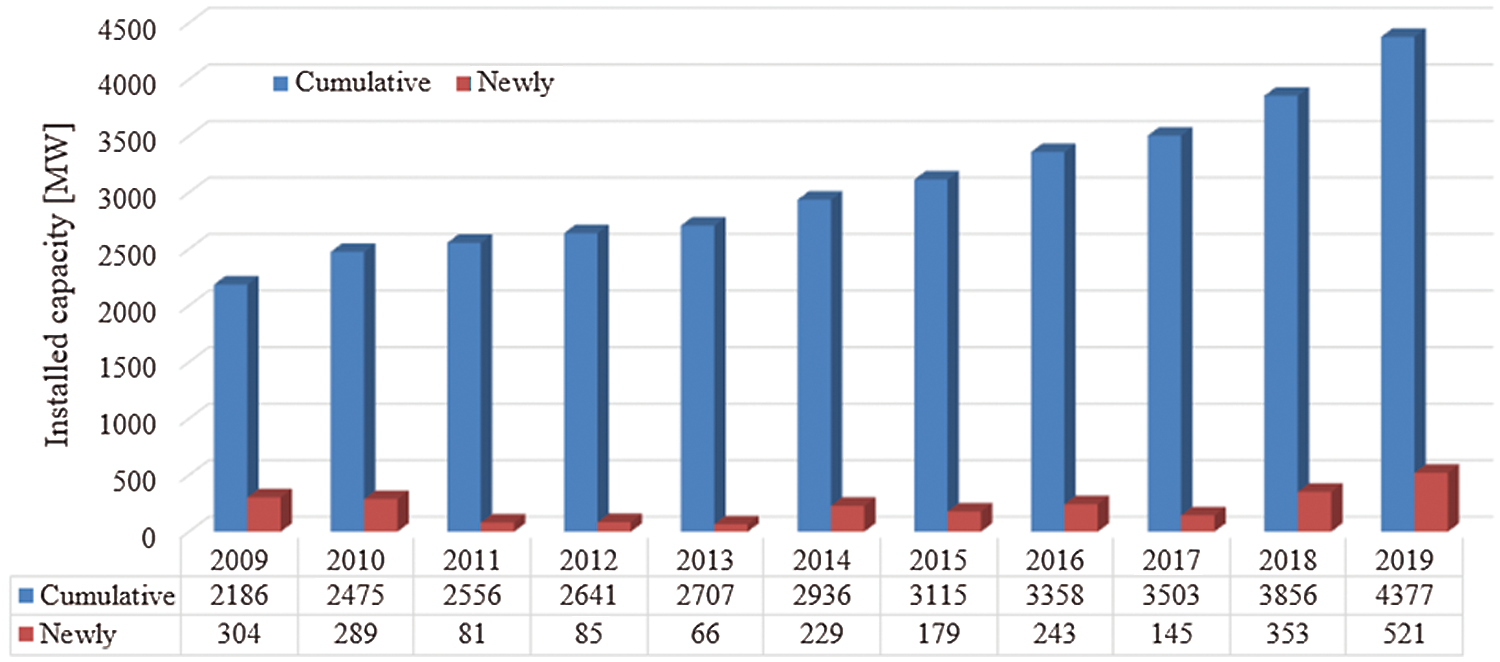
Figure 9: Cumulative and newly installed wind capacity during 2009–2019 in Japan (Source: NEDO/2020)
Fig. 10 shows the top 10 regions in the Japanese wind market at the end of 2019. It can be seen from the figure that the cumulative installed capacity of wind power installed in the Tohoku region is the largest at 1,620 mw, accounting for 34.54% of the installed capacity of wind power purchased in Japan, followed by Kyushu, Hokkaido and Tokyo with an accumulative total installed capacity of 12.57%, 11.30% and 9.16%. The population of Hokkaido is small, and there are enough areas to install wind farms, so there is great potential for wind energy development. However, the power company limits wind power to 250 MW of total grid capacity; for the electricity generated by wind resources in Hokkaido, the grid capacity is still not large enough to accept all.

Figure 10: The top 10 regions of cumulative installed capacity in Japan in 2019 (Source: NEDO/2020)
4.3 The Wind Power Policies in Japanese Government
Since 2012, the new Japanese government headed by the Liberal Democratic Party (LDP) is advancing the reform of the electricity market. The Fukushima nuclear accident has not only changed the public’s view of the government’s energy policy but has also severely damaged Japan’s economy and trade. Therefore, Japan has begun to make changes to the energy structure system, which will allow more use of renewable energy, such as wind energy and solar energy, not nuclear energy. However, it may still take a long time to remove any existing obstacles. As previously mentioned, about 73% of Japan’s land is mountainous, and about 128 million people live in relatively narrow plains [24]. While the decline in social acceptance restricts the development of onshore wind power in Japan, Japan has a strong marine industry technological capability and the world’s sixth-largest marine exclusive economic zone. The development of offshore wind energy, especially floating turbines, has become a promising prospect in future development.
The NEDO roadmap shows that Japan’s prospects are 20 GW by 2030, and the government’s goal is to install 10 GW of offshore wind power capacity by 2030. In order to achieve this goal, the Japanese government has proposed a new draft law to the National Assembly in 2018 that sets uniform standards for offshore wind power projects, stipulating that offshore wind power projects will be submitted to the Ministry of Land, Infrastructure and Transport, and that offshore wind power projects will be allowed to operate for a unified period of 20 years. This has become one reason why Japan’s renewable energy power generation accounts for the accelerated growth of the proportion of total power generation.
5 Challenges for the Development of Wind Power between China and Japan
Chinese and Japanese governments have attached great importance to the utilization and development of renewable energy. Moreover, according to their national conditions, they formulated a series of laws and regulations to strongly promote the development of renewable energy. Although Japan and China seem different in their methods of decision-making and negotiation, wind power capacity in China and Japan is growing rapidly over the past ten years. At the same time, there are still faces a huge challenge. In the following chapter, similarities and differences of challenges for the development of wind power between the different countries are described. According to comparing the difference between government policies, some good suggestions are given to develop wind turbine in China and Japan.
5.1 Similarities of Challenges between China and Japan
The grid continues to be a great challenge, especially in China. At present, there are three main reasons why wind energy is difficult to connect to the grid. Firstly, the biggest obstacle to the spread of wind energy today is generally believed to be the intermittency of wind energy. The installed capacity has grown too fast, far exceeding the speed of planned updates, especially in China [25].
Secondly, wind farm planning is inconsistent with grid planning. There are ten power companies with a maximum distance of more than 2000 kilometers between the two ends of the grid. The reason why wind farms are difficult to connect to the grid is the capacity and length of the grid. Meanwhile, China cannot accommodate such large amounts of wind power, lacks investment and technological innovation, and China’s power grid is not robust and powerful enough [26]. Power fluctuations affect voltage and frequency fluctuations in the grid system. This is due to the long distance between the location of the wind farm and the large load center; most large wind farms are located in the north; (“Three-North” areas in China; Hokkaido in Japan) where interconnections are weak, and the capacity of the grid is low, and the load centers are located in the south of these two countries.
Finally, the unstable power load, the high price of wind power into the grid, and the lack of relevant incentives in the country have led to a lack of initiative for grid companies to promote grid construction to facilitate wind power. Also, the demand for electricity will continue to grow, and the existing conflict between national productivity and the distribution of energy resources will still exist for a long time.
The weather also continues to be one of the great challenges, especially in Japan. Typhoons, high turbulence and lightning cause most problems with wind turbines (As shown in Figs. 11 and 12). There are many points in the same location in China and Japan. They are all oceanic climates and are affected by periodic winds from land and sea. In China, the wind blows in from the Pacific Ocean in summer; typhoons often pass in summer and autumn. In Japan, the wind blowing from the Pacific in summer and the wind blowing from the Sea of Japan in winter; typhoons often pass in autumn. Lightning strikes are frequent throughout the year. In the sea area on the side of the Sea of Japan, lightning strikes are particularly strong in winter.
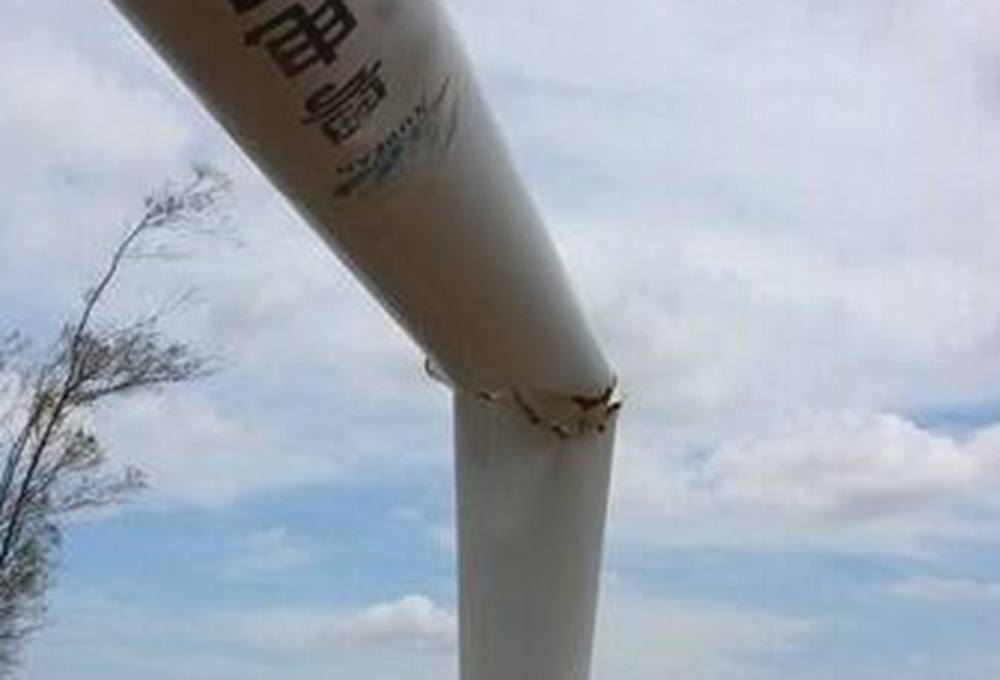
Figure 11: The typhoon of “Waimason” in China (Source: NEDO/2014)
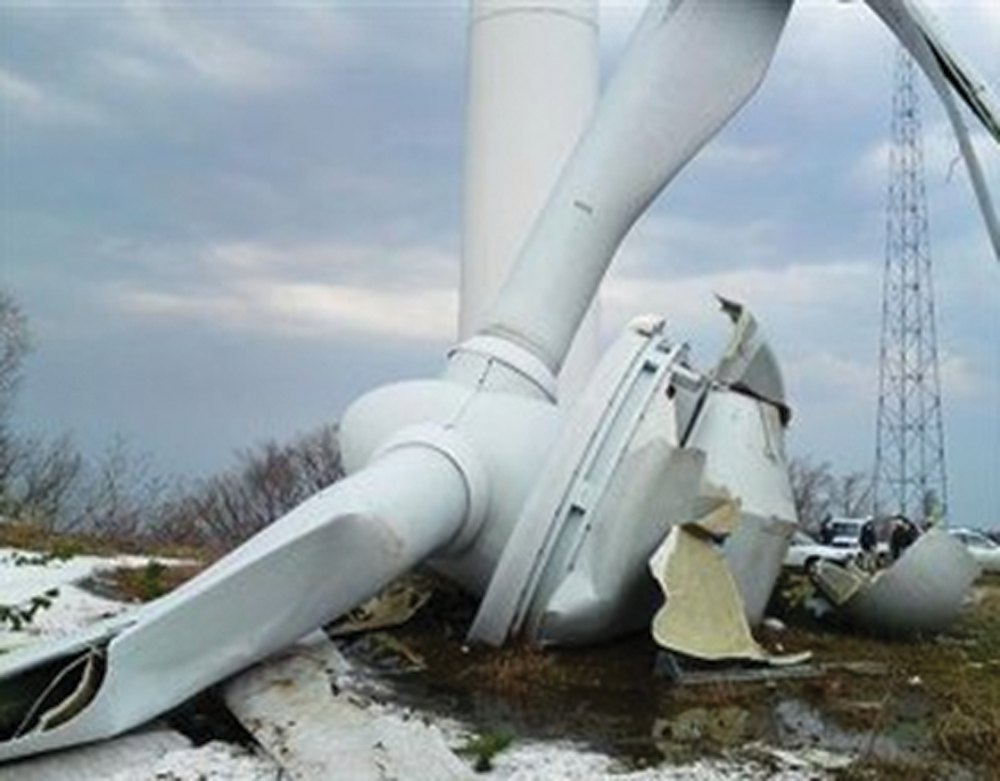
Figure 12: The typhoon of No. 8 in Japan (Source: NEDO/2013)
5.2 Differences of Challenges between China and Japan
There is a lack of coordination among various departments of the Chinese government. The central government mainly considers comprehensive issues from different aspects such as total installed capacity, regional distribution, and access to grid construction. However, the focus of local governments is the scale and speed in their region and pays no attention to the development of wind-access power grid. China lacks independent innovation capabilities. One problem is the government’s bidding system for allocating concessions. It favored companies that agreed to supply electricity at extremely low prices. Therefore, the localization rate of wind power equipment is rapidly increasing. But actually, the lack of core competitiveness of the wind power equipment manufacturing industry has not been fundamentally resolved through the implementation of these regulations. This will lead to insufficient targets to support independent innovation.
The wind power development of Japan is restricted by geographical situation. Due to the limited land area, it is very difficult to build large-scale wind power generation facilities on land. Limited suitable land also limits the number of wind turbines that can be installed in each wind farm, which leads to high costs compared to overseas projects. A complex terrain creates large amounts of turbulence because Japan’s terrain is mountainous, which lead to additional fatigue load and cause many problems for wind turbines, e.g., pitch and yaw system failures [27]. The low level of wind energy resource development and utilization has led to a low national wind power development planning goals.
5.3 Suggestions for China and Japan
The similarities of suggestions for China and Japan: Firstly, increase the proportion of wind power connected to the grid. To encourage power grid companies to increase investment and expand the coverage of power grids, various measures have been taken, but most of these measures are command and control types with few economic incentives. Nevertheless, this does not fundamentally solve the problem of wind power grid-access. In addition, the operating cost of the power grid has greatly increased, and the use of mandatory measures alone is inefficient. To fundamentally solve the wind power grid connection, it is necessary to increase financial subsidies and adopt economic measures. Only by investing sufficient funds and subsidies to the grid company can the enthusiasm for grid construction be mobilized. It will take a long time to solve this problem; therefore, currently, wind turbine installations continue to use the battery storage system or the parallel “off at night” option. Secondly, strengthen independent innovation. It is very important for the government to start supporting these activities. These activities organize comprehensive research and development plans and provide strong and lasting finances, rather than issuing a series of tax policies.
Japan has a lot of reference value to China, which is a developing country in the research of wind turbines. For example, enhance the development of offshore wind power project. The same as Japan, China also has extensive sea areas. Therefore, it is expected that offshore wind power will further develop into one of the pillars of renewable energy in China, especially floating wind turbines. They do not require a dedicated installation ship or a large amount of seabed construction projects. In addition, since they are not fixed on the seabed, the effects of tidal waves, tsunamis or earthquakes can be better avoided. Therefore, it is reasonable to worry about the impact of earthquakes on the stable power supply, because like Japan, China is also a country with frequent earthquakes and typhoons.
With the increasing concern of global climate change and energy shortage, the energy security situation has gradually become severe. Wind energy has increased its proportion in energy strategy due to its safe, clean and sustainable characteristics. Many countries have accelerated the development process of wind power generation and have achieved remarkable results. According to reviewing the development of wind power and relevant policies between China and Japan, the following information is clarified through the analysis.
(1) The global total installed capacity has increased rapidly, and this trend is expected to continue to do so over the next several years. It is an important direction to develop offshore wind power in the future. China once again emerged as the global leader, installing 21 GW, and European numbers were steady, resulting in a global market of just over 703 GW.
(2) China became the largest overall market for wind power since 2009. The fastest capacity growth in recent years has taken place in Inner Mongolia, followed by Xinjiang, Hebei and Gansu. There are eight companies in China were among the world top 15 in 2013. Goldwind Technology Company consolidated its leading position with a market share of 23.31% in China and has become the second-largest power equipment supplier with a market share of 10.30% in the world. The “Beijing Declaration on Wind Energy” has been published, and China will add no less than 800 new installed capacity of wind power in 2030, and at least 3000 GW by 2060.
(3) Japanese total installed capacity has increased rapidly, although the growth rate slowed from 2011 to 2013. Moreover, newly installed wind power capacity increased from 2017 to 2019. The production level of domestic manufacturers has continuously improved. Denmark has the largest market share in Japan, followed by the USA and Germany. Since the Fukushima accident in 2011, the Japanese government has started to move towards the transformation of the energy system, which will permit more reliance on wind energy. Offshore wind development, especially floating turbines, has broad development prospects in the future.
(4) The grid continues to be the great challenge in China and Japan, especially in China. The weather also continues to be one of great challenges, especially in Japan. China’s lack of support for independent innovation is due to the lack of coordination among various departments. The wind power development of Japan is restricted by the geographical situation.
(5) Chinese and Japanese governments should increase the proportion of wind power connected to the grid. At the same time, it strengthens the country’s innovation and creativity capabilities. Compared with Japan, it is expected that one of the pillars of China’s renewable energy is expected to be offshore wind power, specifically floating wind turbines.
Acknowledgement: We would like to thank all those who have reviewed and contributed to this paper for their valuable assistance.
Funding Statement: The authors received no specific funding for this study.
Conflicts of Interest: The authors declare that they have no conflicts of interest to report regarding the present study.
1. Al Shaqsi, A. Z., Sopian, K., Al-Hinai, A. (2020). Review of energy storage services, applications, limitations, and benefits. Energy Reports, 6, 288–306. DOI 10.1016/j.egyr.2020.07.028. [Google Scholar] [CrossRef]
2. Wang, Z. W., Carriveau, R., Ting, D. S. K., Xiong, W., Wang, Z. W. (2019). A review of marine renewable energy storage. International Journal of Energy Research, 43(12), 6108–6150. DOI 10.1002/er.4444. [Google Scholar] [CrossRef]
3. Nazari-Heris, M., Mirzaei, M. A., Mohammadi-Ivatloo, B., Marzband, M., Asadi, S. (2020). Economic-environmental effect of power to gas technology in coupled electricity and gas systems with price-responsive shiftable loads. Journal of Cleaner Production, 244, 118769. DOI 10.1016/j.jclepro.2019.118769. [Google Scholar] [CrossRef]
4. Gholinejad, H. R., Loni, A., Adabi, J., Marzband, M. (2020). A hierarchical energy management system for multiple home energy hubs in neighborhood grids. Journal of Building Engineering, 28, 101028. DOI 10.1016/j.jobe.2019.101028. [Google Scholar] [CrossRef]
5. Irandoust, M. (2019). On the causality between energy efficiency and technological innovations: Limitations and implications. International Journal of Green Energy, 16(15), 1665–1675. DOI 10.1080/15435075.2019.1681430. [Google Scholar] [CrossRef]
6. Borawski, P., Beldycka-Borawska, A., Jankowski, K. J., Dubis, B., Dunn, J. W. (2020). Development of wind energy market in the european union. Renewable Energy, 161, 691–700. DOI 10.1016/j.renene.2020.07.081. [Google Scholar] [CrossRef]
7. China Machinery Network (2019). http://www.chinabidding.com/zxzx-detail-185665253.html (in Chinese). [Google Scholar]
8. People’s Daily (2021). https://baijiahao.baidu.com/s?id=1668261697487666400&wfr=spider&for=pc (in Chinese). [Google Scholar]
9. National Energy Administration (2020). http://www.nea.gov.cn/2020-02/28/c_138827910.htm (in Chinese). [Google Scholar]
10. NEDO (2015). https://www.meti.go.jp/press/2015/07/20150716004/20150716004_2.pdf (in Japanese). [Google Scholar]
11. Advisory Committee for Energy (2013). Expansion issues in the production and procurement stage, renewable energy. Agency for Natural Resources and Energy, Research Group, Fourth Meeting, Document 2. [Google Scholar]
12. Global Trends in Renewable Energy Investment (2020). http://news.bjx.com.cn/html/20200623/1083290.shtml. [Google Scholar]
13. Guo, Z. P., Li, Q. A., Liu, Q. L., Wang, Y. F. (2012). A review of wind energy activities in China. Advanced Materials Research, 424–425, 1318–1321. DOI 10.4028/www.scientific.net/AMR.424-425.1318. [Google Scholar] [CrossRef]
14. Medea, T., Kamada, Y., Murata, J., Li, Q. A. (2013). A review on the development of sustainable wind energy strategy and implementation in China. The 2nd International Symposium for Sustainability by Engineering at MIU (IS2EMU 2012), pp. 162–164. Mie, Japan. [Google Scholar]
15. China Meteorological Administration (CMA) (2020). http://www.cma.gov.cn/en/. [Google Scholar]
16. Chinese Wind Energy Association (CWEA) (2020). http://www.cwea.org.cn/. [Google Scholar]
17. Kang, J. J., Yuan, J. H., Hu, Z. G., Xu, Y. (2012). Review on wind power development and relevant policies in China during the 11th five-year-plan period. Renewable & Sustainable Energy Reviews, 16(4), 1907–1915. DOI 10.1016/j.rser.2012.01.031. [Google Scholar] [CrossRef]
18. ChinaFAQs the Network for Climate and Energy Information (2020). http://www.chinafaqs.org/. [Google Scholar]
19. Statistics Bureau (2021). http://www.stat.go.jp/data/jinsui/new.htm. [Google Scholar]
20. Tanabe, N. (2014). Japan’s first floating offshore wind power project making progress, Addressing challenge. JFS Newsletter, 138. [Google Scholar]
21. New Energy and Industrial Technology Development Organization (2021). http://www.nedo.go.jp/english/index.html. [Google Scholar]
22. Japan Meteorological Agency (2012). http://www.jma.go.jp/jma/indexe.html/. [Google Scholar]
23. Valentine, S. V. (2011). Japanese wind energy development policy: Grand plan or group think? Energy Policy, 39(11), 6842–6854. DOI 10.1016/j.enpol.2009.10.016. [Google Scholar] [CrossRef]
24. Maeda, T., Kamada, Y. (2009). A review of wind energy activities in Japan. Wind Energy, 12(7), 621–639. DOI 10.1002/we.313. [Google Scholar] [CrossRef]
25. Mostafaeipour, A. (2010). Productivity and development issues of global wind turbine industry. Renewable & Sustainable Energy Reviews, 14(3), 1048–1058. DOI 10.1016/j.rser.2009.10.031. [Google Scholar] [CrossRef]
26. China Renewable Energy Market Outlook (2008). http://www.energybusinessreports.com. [Google Scholar]
27. Ministry of the Environment Government of Japan (2020). http://www.env.go.jp/en/. [Google Scholar]
 | This work is licensed under a Creative Commons Attribution 4.0 International License, which permits unrestricted use, distribution, and reproduction in any medium, provided the original work is properly cited. |